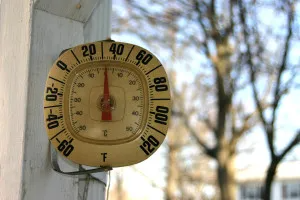Why (and How) You Should Exercise Outside This Winter

Think twice before you hibernate from exercising outdoors during winter's cold-weather months.

When winter comes, you might think you'll have to limit your exercise routine to your living room or the gym. The truth is, however, working out outside during cold weather can result in health benefits not seen at any other time throughout the year.
First, cold weather exercise outdoors during winter months can give you extra exposure to the sun. With the reduced amount of natural light available during the winter, the added Vitamin D the sun provides can help keep your bones strong, ward off depression, burn fat, aid digestive issues, and even help prevent high blood pressure and type 2 diabetes.
Cold-weather workouts also burn more calories than warm-weather ones. In addition to the calories that you typically burn from exercise, your body has to work harder during the winter to regulate its core temperature, which results in more overall calories being burned.
Also, if you already exercise regularly, working out during the winter can make your heart stronger. The heart has to work harder to pump blood during cold weather, and winter workouts are a great way of building up your heart muscle so you can handle harder workouts in the future, as well as the stresses of everyday life. (If you don't already exercise regularly, cold-weather workouts can actually harm your heart. Check with your doctor before starting any outdoor exercise routine.)
Lastly, not only can the increased exposure to sunlight boost your mood, but so can winter's lack of humidity and cooler temperatures. The lack of humidity makes the air feel lighter than it does in the spring or summer, which can make you feel better before, during, and after your workout. Also, not only can colder temperatures be stimulating, but your body produces higher levels of endorphins as it tries to keep warm during cold-weather exercise, which can also make you feel happier and bouncier.
Don't Throw Caution to the Wind (and Cold)
While winter workouts can carry extra health benefits, be sure to exercise some caution to ensure that your winter exercise routine doesn't compromise your health.
Here a few tips:
- Cold weather can become dangerous weather rather quickly. Check your local weather forecast before making exercise plans.
- Dress in layers. Adding or removing layers while you work out helps you avoid the overheating and chills that come with cold-weather exercise. Include some reflective layers to help protect you if you are going to exercise at night, and make sure to properly protect your head, ears, face, neck, hands (wear mittens instead of gloves), and feet from the elements.
- Sunburn isn't limited to summer. Put on some sunscreen (and lip balm) to guard against UVA and UVB rays.
- Stretch and warm up — and warm your clothes in the dryer — before heading outside. Not only will you be ready to hit the ground running, but you'll keep warm while your body builds up its own heat.
- Run against the wind—and in a loop. If you start by running into the wind, you'll have the wind at your back when you finish, reducing your chances that the sweat from your workout will lead to chills, which can lead to hypothermia. A circular route can help you get back home more quickly should you get too cold, or if the weather takes a turn for the worse.
- Drink plenty of fluids. Just like sunburn is still a risk during the winter, so is dehydration. Despite the cold, you are still sweating. Stay hydrated before, during, and after your workout—whether you feel thirsty or not.
Sources: mayoclinic.org, runnersworld.com, sparkpeople.com, huffingtonpost.com